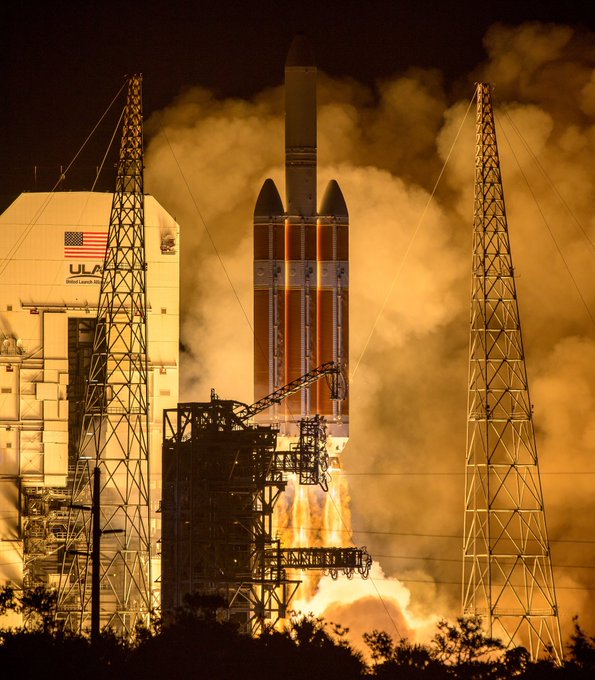Right on schedule, the Parker Solar Probe, on its mission to “touch” the Sun, lifts off from Kennedy Space Center in Cape Canaveral, Florida.
NASA’s Launch Services Program, “Earth’s Bridge to Space,” live tweeted the launch.
“Trajectory good.”
“We have strap-on boosters.”
“The second stage’s main engine has started (MES1) and the fairing has been jettisoned.”
“The @NorthropGrumman third stage has separated from the #DeltaIVHeavy launch vehicle! ”
“The @NorthropGrumman third stage has ignited!”
“We have spacecraft separation!”
“The #ParkerSolarProbe is on a trajectory that will bring it closer to the Sun than any other object created by humanity.”
“We have confirmation that the #ParkerSolarProbe solar panels have been deployed.”
“The #ParkerSolarProbe is now on its way to orbit our Sun and collect invaluable scientific data to benefit all of humanity!”
The 3:31 a.m. Parker Solar Probe liftoff at Cape Canaveral Air Force Station, “with its powerful United Launch Alliance Delta IV Heavy rocket carving an arc of orange flame into the predawn sky,” Space reported.
The probe is designed to travel “faster than any craft ever has, and getting unprecedentedly close to the sun; indeed, it will fly through our star’s outer atmosphere, known as the corona. And the measurements the probe makes there will reveal key insights about our star’s inner workings that have eluded scientists for decades,” Space reported.
NASA Chief Scientist Jim Green told Space, “We’ve been wanting to do this for 60 years, ever since (Dr.) Eugene Parker got up and said, ‘I believe the sun is outgassing.'”
There was skepticism back in the ’50s, but the astrophysicist was “proved right.”
Parker’s 1958 solar wind research is aboard the craft in a “memory card that also bears the names of more than 1.1 million people. These folks — who include “Star Trek” icon William Shatner — responded to a March 2018 NASA invitation to kiss the sun along with the Parker Solar Probe.”
Parker, 91, is the first living scientist to see a NASA mission maned for him. He watched the launch.
The solar probe, the size of a compact car, will far into the atmosphere of the Sun, and while it won;t actually touch or “kiss” teh Sun, it will be the closest any craft has been to Earth’s star. And it will be hot there. It will gather data and send it back home, 89 million miles away. The idea is the more we know about the Sun, the more science learn about other stars in the Universe. Scientists believe that knowing more about the Sun will help provide insights into the development of life on Earth.
